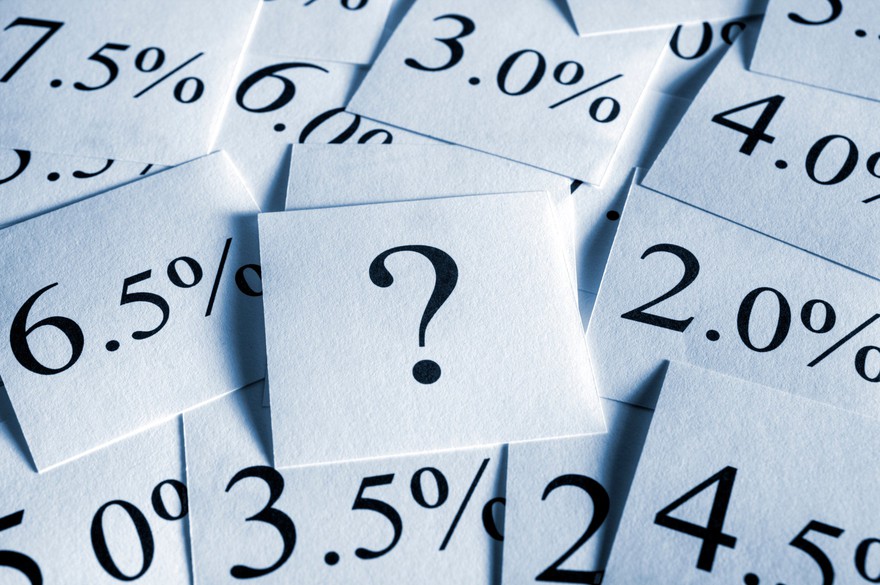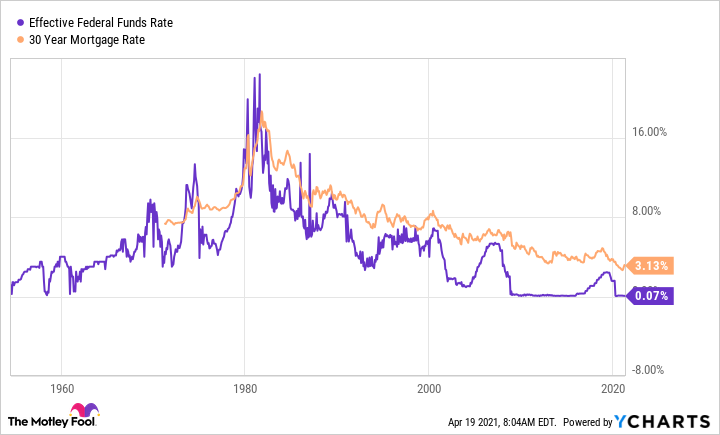
Interest Rate
Federal Reserve

Invest better with The Motley Fool. Get stock recommendations, portfolio guidance, and more from The Motley Fool's premium services.
The federal funds rate is the benchmark interest rate at which banks lend each other money. It has a direct bearing on many other rates and is the concept we're talking about when we say, "The Fed lowered rates today."
As we've seen throughout the past two decades, disasters can and do happen -- sometimes for no particular reason -- and the Fed will use the tools at its disposal to calm the economy while stimulating investment. The federal funds rate is one of those tools.
As noted, the federal funds rate is the interest rate at which banks lend each other money. It's also known as the overnight lending rate. The Federal Open Market Committee (FOMC) meets eight times every year to set the rate, which is typically expressed as a range.
At its meeting on July 26, 2023, the Federal Reserve raised the federal funds rate by 0.25%, setting it between 5.25% and 5.5%. This range is used to influence a number of other important interest rates we see in daily life. The increase marked its highest level in more than 20 years.
After a spike in the early 1980s, when the federal funds rate rose to almost 20%, we've seen a steady decrease in the benchmark rate. A declining federal funds rate has had a corresponding impact on many other interest rate offerings. As you can see from the chart below, there's a clear positive correlation (albeit imperfect) between the federal funds rate and the 30-year mortgage rate.
Simply by considering some of the major events of the past several decades, we can get clues about how and why the federal funds rate has moved as it has. In the mid-2000s, interest rates had begun to rise rapidly, but the housing and financial crisis abruptly brought rates to zero for almost 10 more years.
As rates slowly began to rise again in 2018, the coronavirus pandemic quickly shut the door and brought rates down quickly. Meanwhile, recent surging inflation has caused the Federal Reserve to drive rates higher again.
While you might have thought you were free of the federal funds rate when you walked out of your Economics 101 final exam, it turns out you'll probably need to be aware of it for the rest of your life. The federal funds rate matters greatly for a number of groups:
The federal funds rate, as previously mentioned, is the overnight interest rate at which banks lend to each other. The federal funds rate is, importantly, an interest rate unto itself.
Second, the federal funds rate heavily influences the interest rates charged in the broader economy (and to consumers) by serving as a benchmark. One of the most cited rates is the prime rate, which is the interest rate banks charge to their best customers (or those most qualified to pay). The prime rate is directly influenced by the federal funds rate.
Next, the federal funds rate is not to be confused with the discount rate, which is the rate of interest the Federal Reserve charges to make loans to banks and other depository institutions.
Last, the federal funds rate is closely linked to short-term interest rates, such as Treasury bill yields, but is not directly predictive of long-term rates. Simply put, short-term changes in interest rates influence -- but do not solely determine -- longer-term rates. A lot can happen over several decades.
It's unlikely you'll be quizzed on this information anytime soon, but it's good to know what the federal funds rate is and how it can influence the other interest rates you may come across in everyday life.
When the Federal Reserve chair talks about lowering or raising the federal funds rate, you'll know this very well might affect the cost of your new fixed-rate mortgage or help with the cost/benefit analysis for taking a loan against your vehicle. Simply knowing the federal funds rate is set by the FOMC, that it can affect many of the rates you see, and that it can affect your investment and borrowing decisions goes a long way.
As of mid-2023, the federal funds rate had risen to its highest level in more than 20 years to combat elevated inflation. That's making it a lot more expensive to borrow money, which will likely slow the economy. So now might not be the best time to be a borrower.